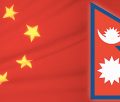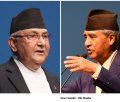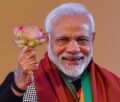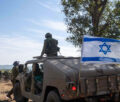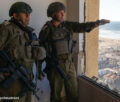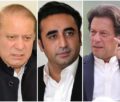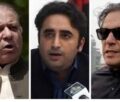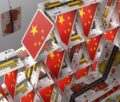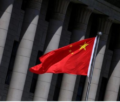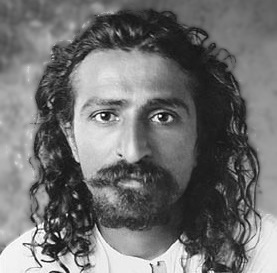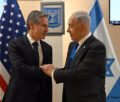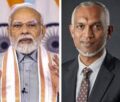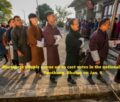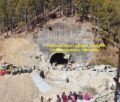“Referendum 2020”-Beyond Democratic Norms: By Rattan Saldi
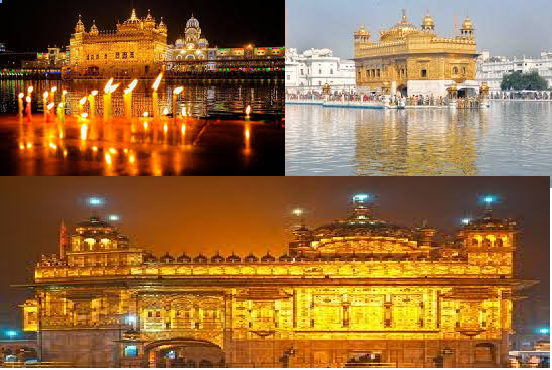
Intelligence Agencies had warned Government of India of stepped up militant activity by Khalistani protagonists belonging to the US based Sikhs for Justice, SFJ, and other terrorist outfits around Independence Day and thereafter. They wanted to draw world attention to their dream project, “Referendum 2020” for setting up an independent Khalistan, in Sikh dominated Punjab province. The Referendum was scheduled for November this year but has since postponed to 2022.
A top Canadian think tank, Macdonald Laurier Institute, in a recent study, said Khalistan is a geopolitical project nurtured by Pakistan. And added with empirical evidence that the Khalistani elements are actively backed by Inter-Services Intelligence, ISI, of Pakistan.
New Delhi has been keeping a close tab on all such elements and remained quite vigilant about any effort to foment trouble on 15th August. The I-Day passed off peacefully.
In a manner of speaking the Khalistan movement can be said to have its genesis in the Punjabi Suba agitation of the late Sixties. The Akali leadership spearheaded the agitation. Their demand was more autonomy for the Punjab province; it rested on the premise of recognition of Sikhism as a separate religion. The campaign culminated in the Anandpur Sahib Resolution. Adopted in 1973, it sought devolution of more powers to Punjab, in synch with the concept of Federalism.
The Indira Gandhi government rejected the Anandpur Sahib resolution deeming it as a secessionist document. It urged the leadership of the Shiromani Akali Dal (SAD), which was spearheading the movement, not to precipitate the issue in an already surcharged atmosphere. But the Akalis and Jarnail Singh Bhindranwale, who headed the Sikh seminary, Damdami Taksal, (in the town of Mehta Chowk, about 25 miles north of Amritsar), launched a new campaign with religious trappings styled as Dharma Yudh Morcha to mobilise the masses. Soon afterwards, Bhindranwale captured the highest temporal seat of the Sikhs – Harimandir Sahib (also known as Golden Temple) and Akal Takhat, both located in Amritsar.
The Shiromani Akali Dal President of the day Harchand Singh Longowal, considered a moderate Sikh, stuck to the demands enunciated in the Anandpur Sahib Resolution. “Let us make it clear once and for all that the Sikhs have no designs to get away from India in any manner. What they simply want is that they should be allowed to live within India as Sikhs, free from all direct and indirect interference and tampering with their religious way of life. Undoubtedly, the Sikhs have the same nationality as other Indians,” he declared.
This was not palatable to radical elements, who wanted a separate sovereign Khalistan carved out of Punjab at any cost. The heightened militancy culminated in the 1984 Blue Star operation. Bhindranwale and his men were killed. And Khalistani militants were flushed out of the Golden Temple and Akal Takhat.
Shortly afterwards, Prime Minister Indira Gandhi was assassinated. So was Longowal himself. By then, that is July 1985, the Akali leader had signed an accord with the government to usher in a new dawn in Punjab. Under the deal, known as the Rajiv-Longowal Accord, the Government of India accepted most of the demands of the Shiromani Akali Dal, which in turn withdrew its agitation.
Ever since Punjab has been witnessing relative peace. It is not that the Khalistani elements have not been keeping their powder dry. But have failed to make their presence felt.
The SFJ and several other Sikh militant organizations have set up their offices in Pakistan, Canada, the United Kingdom, Germany and some other European countries; they have been holding demonstrations before Indian Missions or at vantage points in major cities of these countries, mainly around India’s I-Day.
The SFJ gave a call for demonstrations before Indian Missions this year also. It announced rewards for hoisting Khalistani flags at District Administrative Complexes and Panchayat complexes in Punjab. The SFJ offered a reward of 125 thousand dollars to whosoever dared to hoist the Khalistani flag atop Red Fort in Delhi on the 15th August.
There were no reports of any such secessionist activity from anywhere in India or abroad. However, two Khalistani activists reportedly hoisted Khalistani flag atop Administrative Complex in Moga district of Punjab; and desecrated the Indian tricolour as the flag was fluttering atop the office of the Deputy Commissioner in the complex. Their interrogation revealed that they planned to go to Pakistan via Nepal. Their Pakistani handlers had provided huge sums of money to them for the purpose.
On Sept 5, two operatives of Babbar Khalsa International, a banned organization, were arrested from North Delhi; they had planned to slip into Pakistan and from there into the West Asia after accomplishing the task of assassinating the targets assigned by their Pakistani handlers. Seven pistols and a large quantity of cartridges were recovered from the duo besides several videos and photographs related to the Khalistan movement.
India banned the Sikhs for Justice in July 2019; this July designated as terrorists the U.S -based “Referendum 2020” crusader Gurpatwant Singh Pannun and the Canada based Hardeep Singh Nijjar of Khalistan Tiger Force. Seven others also were placed under the category for trying to revive militancy in Punjab. As many as 40 Websites of pro-Khalistani groups have also been shut down.
Government of India has attached large properties of Gurpatwant Singh Pannun in Amritsar district, as also of Hardeep Singh Nijjar in the Jallandhar district under the Unlawful Activities Prevention Act. This is the first case of confiscation of properties of the banned Khalistani militants.
Reports from Lahore, where the SFJ has its office, say the “Referendum 2020” has been postponed for two years. It may be held now in 2022. The obvious reason being given for the decision is the spread of Covid -19 pandemic. The “Referendum” is entirely an internet-based exercise and as such it could have been easily held during the pandemic. Registration for voting opened this July.
Real reasons for the postponement are hidden behind a smoke screen. Clearly, some five reasons can be ascribed for the surprise decision.
The Khalistani protagonists want to keep the spark ignited for some more time to mobilize as much funds as possible in the name of “Referendum”. They are frequently making calls to journalists and others in India and abroad, possibly from the United States and Pakistan to help them in their cause.
There is hardly any response to “Referendum” call from the Sikh diaspora of United States, Canada, Germany and the United Kingdom, which have a sizeable Sikh population. Any Referendum is held within a specified geographical territory and for a specific purpose. In this case the purpose is known but it is completely open ended, without any barriers or boundaries, open to the Sikhs in the entire world.
Affluent Sikh families settled abroad are unmoved; they have little or no stakes in Punjab. While the elder generation has not visited Punjab for decades, many of the youngsters of these families have not gone to their home- land for years, if not decades. So much so, the talk of “Referendum” is unappealing.
Canada and the U.K., where the Khalistani militants have their bases have already categorically ruled out recognizing the “Referendum 2020”. A recent statement of the Canadian Foreign office said: “Canada respects the sovereignty, unity and territorial integrity of India and Government of Canada will not recognize the Referendum.” The British also said the same thing with characteristic bluntness. “We consider Indian Punjab is part of India,” a British High Commission official said in New Delhi. And added: “The Referendum is unofficial and the organization (SFJ) is banned in India. The UK government is not involved in any way with this unofficial and non-binding referendum.”
There is no denying that Khalistani groups have been indulging in subversive activities at times. Pakistan is arming them. Consignments of arms and ammunition are air dropped by drones in the areas of Punjab and Kashmir bordering Pakistan going by the confiscations in recent times. Khalistani posters are seen at important Gurudwaras in Pakistan whenever Indian pilgrims visit these holy places.
The silver lining however has been that Sikhs in Punjab and the Sikh diaspora are opposed to Khalistani activities. Hardly a handful of them have shown their sympathies to pro-Khalistani groups. In August 2018, for instance, when a small group of Khalistani protagonists tried to hold a demonstration at Trafalgar Square in London, they were confronted by a pro-India group of Sikhs and Hindus beating drums to drown their slogans for Khalistan.
Simply put, the fulfilment of Khalistan demand that too through “Referendum 2020” does not look like a remote reality as of now. The Khalistani radicals may like to keep the wind blowing. That is a different issue.
(Syndicate Features)
-
Book Shelf
-
 Book Review
DESTINY OF A DYSFUNCTIONAL NUCLEAR STATE
Book Review
DESTINY OF A DYSFUNCTIONAL NUCLEAR STATE
- Book ReviewChina FO Presser Where is the fountainhead of jihad?
- Book ReviewNews Pak Syndrome bedevils Indo-Bangla ties
- Book Review Understanding Vedic Equality….: Book Review
- Book Review Buddhism Made Easy: Book Review
- Book ReviewNews Elegant Summary Of Krishnamurti’s teachings
- Book Review Review: Perspectives: The Timeless Way of Wisdom
- Book ReviewNews Rituals too a world of Rhythm
- Book Review Marx After Marxism
- Book Review John Updike’s Terrorist – a review
-
-
Recent Top Post
-
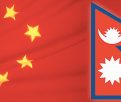 Commentaries
Impasse over BRI Projects in Nepal
Commentaries
Impasse over BRI Projects in Nepal
-
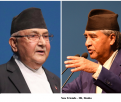 CommentariesNews
Yet another Musical Chairs in Kathmandu
CommentariesNews
Yet another Musical Chairs in Kathmandu
-
 CommentariesTop Story
Spurt in Anti-India Activities in Canada
CommentariesTop Story
Spurt in Anti-India Activities in Canada
-
 NewsTop Story
Nepal: Political Stability Under Threat Again
NewsTop Story
Nepal: Political Stability Under Threat Again
-
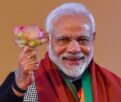 NewsTop Story
Accountability Tryst With 2024 Ballot….
NewsTop Story
Accountability Tryst With 2024 Ballot….
-
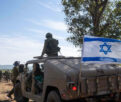 NewsTop Story
What Would “Total Victory” Mean in Gaza?
NewsTop Story
What Would “Total Victory” Mean in Gaza?
-
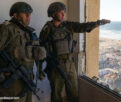 CommentariesTop Story
The Occupation of Territory in War
CommentariesTop Story
The Occupation of Territory in War
-
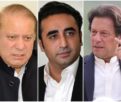 CommentariesTop Story
Pakistan: Infighting in ruling elite intensifies following shock election result
CommentariesTop Story
Pakistan: Infighting in ruling elite intensifies following shock election result
-
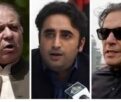 CommentariesTop Story
Proforma Polls in Pakistan Today
CommentariesTop Story
Proforma Polls in Pakistan Today
-
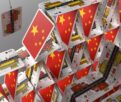 CommentariesTop Story
Global South Dithering Away from BRI
CommentariesTop Story
Global South Dithering Away from BRI
-
AdSense code


